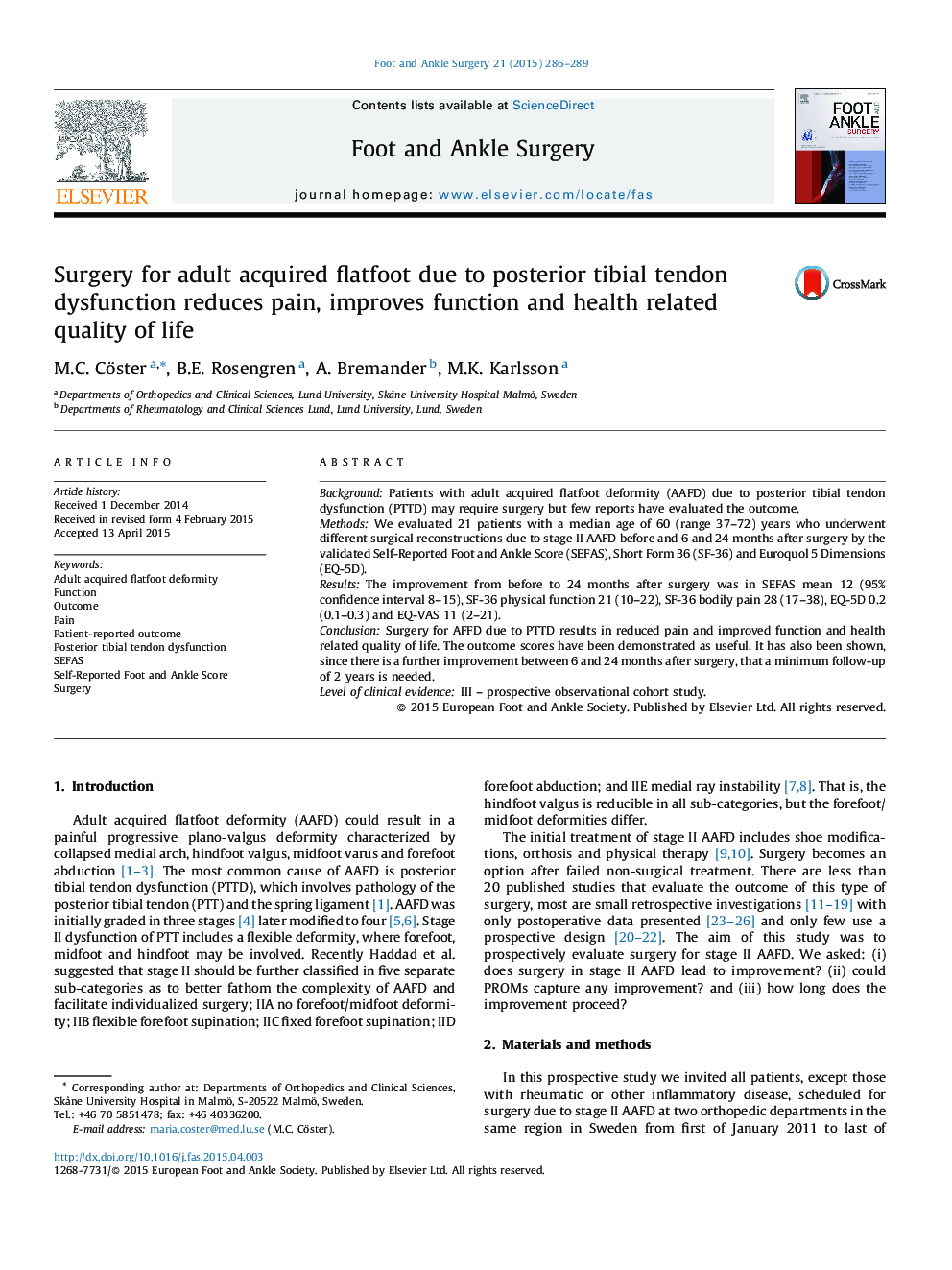| Article ID | Journal | Published Year | Pages | File Type |
|---|---|---|---|---|
| 6205275 | Foot and Ankle Surgery | 2015 | 4 Pages |
â¢Surgery for flatfoot deformity requires a combination of soft-tissue and bony procedures.â¢There are less than 20 published studies that evaluate the outcome of this type of surgery.â¢We evaluated prospectively the patient-reported outcome of surgery for flatfoot deformity.â¢SEFAS is a recently validated patient-reported, patient-friendly foot-and ankle specific score.â¢We found significant improvements in SEFAS from before to 6 and 24 months after surgery for flatfoot.
BackgroundPatients with adult acquired flatfoot deformity (AAFD) due to posterior tibial tendon dysfunction (PTTD) may require surgery but few reports have evaluated the outcome.MethodsWe evaluated 21 patients with a median age of 60 (range 37-72) years who underwent different surgical reconstructions due to stage II AAFD before and 6 and 24 months after surgery by the validated Self-Reported Foot and Ankle Score (SEFAS), Short Form 36 (SF-36) and Euroquol 5 Dimensions (EQ-5D).ResultsThe improvement from before to 24 months after surgery was in SEFAS mean 12 (95% confidence interval 8-15), SF-36 physical function 21 (10-22), SF-36 bodily pain 28 (17-38), EQ-5D 0.2 (0.1-0.3) and EQ-VAS 11 (2-21).ConclusionSurgery for AFFD due to PTTD results in reduced pain and improved function and health related quality of life. The outcome scores have been demonstrated as useful. It has also been shown, since there is a further improvement between 6 and 24 months after surgery, that a minimum follow-up of 2 years is needed.Level of clinical evidenceIII - prospective observational cohort study.
